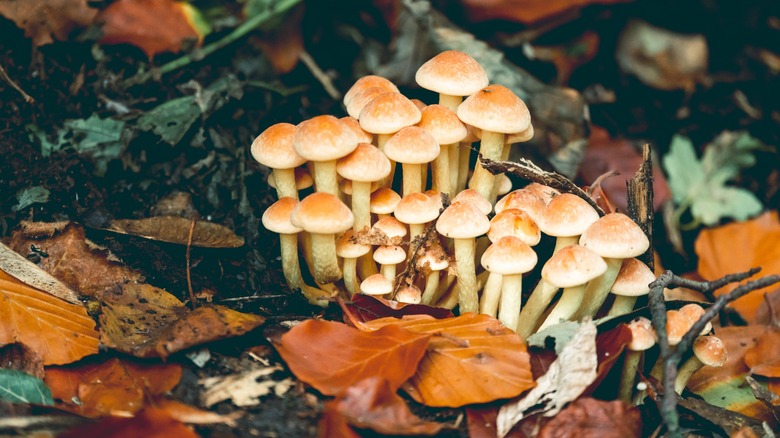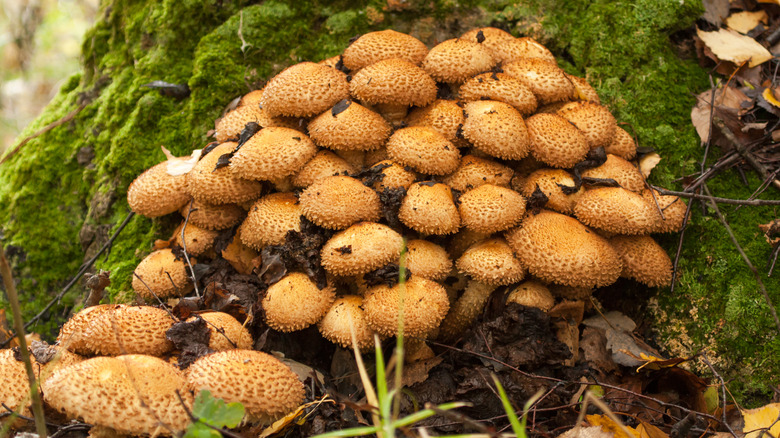The Stem Trick For Identifying Honey Mushrooms That Are Safe To Eat
Mushrooms and fungi have been a food source for centuries, with Real Food Encyclopedia reporting their first documented appearance dates back to the year 600 A.D. in China and Japan as shiitakes. Since then, people have added mushrooms to soups and stews, omelets, or enjoyed them on their own — sauteed, grilled, fried, and more.
If you're purchasing your mushrooms from the store, you can rest assured they are non toxic. If you're foraging for them in the wild, though, you may run into problems. Some are incredibly easy to identify as toxic or non-toxic, but oftentimes, perfectly edible mushrooms look nearly identical to incredibly toxic, even fatal, fungi. One such mushroom is the honey mushroom (Armillaria mellea), which the Missouri Department of Conservation warns looks similar to Galerina marginata, a deadly fungus. Those with trained foraging eyes may be able to tell the difference at a glance, but beginning mushroom hunters should be wary. Luckily, there's one simple trick to identifying the difference between the two.
Look for rings
When foraging for honey mushrooms, it's vital that you don't accidentally pick up galerina marginata, also referred to as deadly galerina, mushrooms. As the Missouri Department of Conservation warns, eating this toxic fungus could lead to gastrointestinal upset including vomiting, diarrhea, and stomach cramps. Progressed symptoms can impact the function of your liver and kidneys, and in worse-case scenarios, death.
According to Masterclass, one of the easiest ways to distinguish honey mushrooms from deadly galerinas is by the stem. The stems are long and grow from one base in clusters, and more often than not will have a ring somewhere, usually in yellow, dark brown, or white. Deadly galerinas, on the other hand, have a gradient stem — an off-white shade at the top near the cap, and a darker brown color towards the bottom, which is also thicker than the top. If you're still unsure, you can also check for the mushroom's spore print. To do this, remove the cap from the stem and grab a piece of black paper. Use the cap as a stamp on the paper, the gills facing downwards. Honey mushrooms will leave behind white spores, but deadly galerina will leave behind a rust-colored brown spore print.

